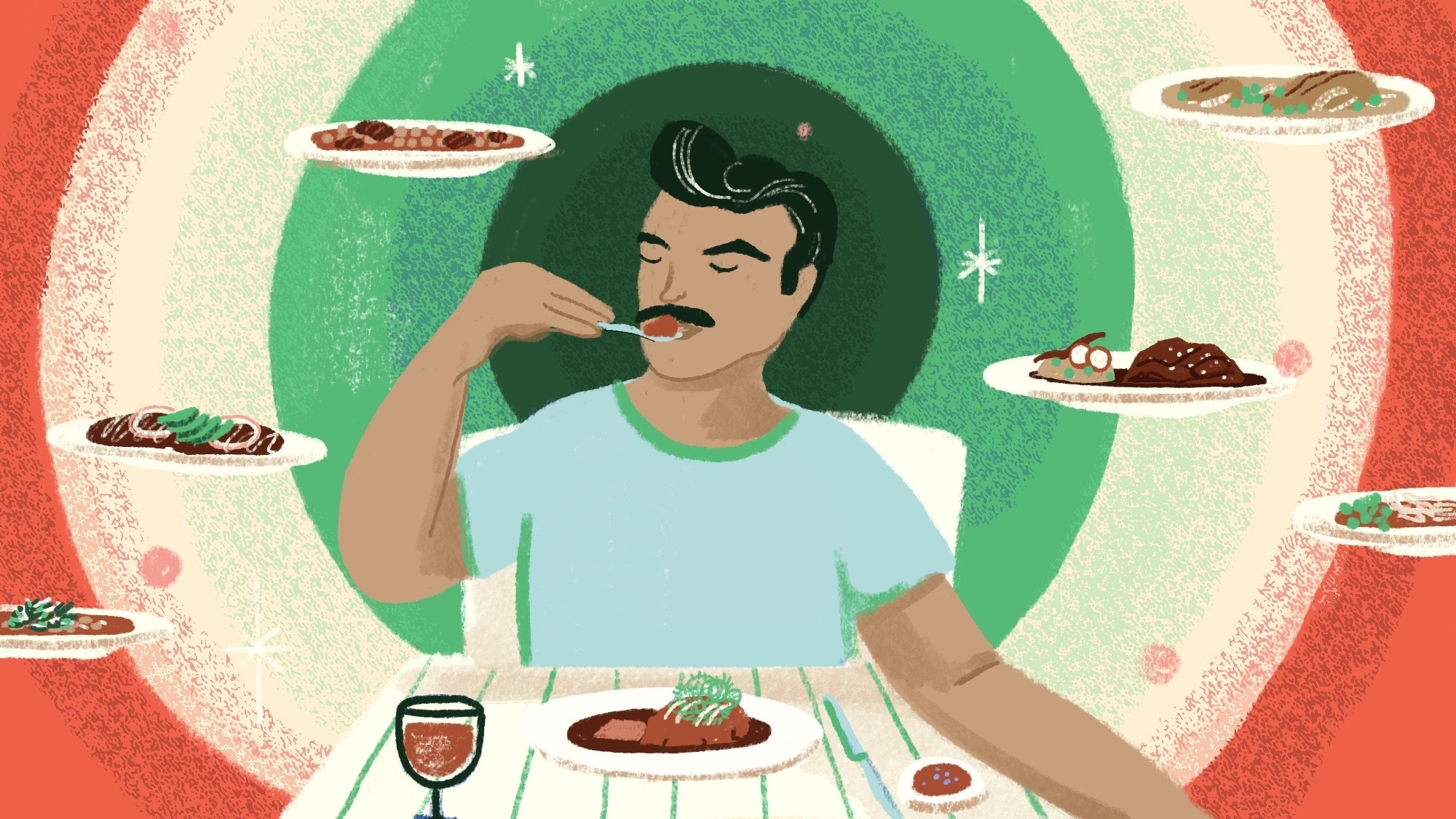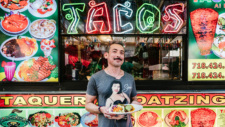

A New Generation of Mexican Chefs Is Serving Heritage (and Progress)
 Born in the small border town of Agua Prieta in 1947, Zarela Martínez learned to cook on ranchos with her mother in the Mexican state of Sonora across from Arizona. From there, she worked her way up to become a celebrity chef who put Mexican fine dining on the map in New York City in the mid-’80s.
Born in the small border town of Agua Prieta in 1947, Zarela Martínez learned to cook on ranchos with her mother in the Mexican state of Sonora across from Arizona. From there, she worked her way up to become a celebrity chef who put Mexican fine dining on the map in New York City in the mid-’80s.
Her restaurant, Zarela, was open from 1987 to 2011 in Midtown East, and there, New Yorkers encountered dishes like atún con pepián verde, a seared tuna steak served with a mole akin to what one might find in Veracruz, and pollo borracho (or drunk chicken), rife with Sonoran ingredients and flavors. Martínez effectively charted new territory for a whole generation of Mexican and Mexican American chefs, and even today, Zarela remains a beacon for what a fine-dining Mexican restaurant helmed by a Mexican chef could be in Gotham.
I met Martínez in person in 2016, years after Zarela shut its doors. We shared a conversation about the challenges of “making a name” for ourselves as Mexican American folks from the rural borderlands of Arizona and Sonora in New York. She dealt me a piece of advice: never stop learning about Mexican food. I had just started teaching a college class about tacos that had gone viral on social media. She had already made it by then.
Fast-forward to the decade after Zarela closed, and there are now five Michelin-starred Mexican restaurants in the United States, and three of them — Casa Enrique, Claro, and Oxomoco — are in New York’s outer boroughs of Queens and Brooklyn, where the majority of the city’s Mexican and Mexican American population lives. Sure, Michelin may not be the ultimate culinary benchmark to invoke for some, but the recognition points to New York as a place to be reckoned with. And it’s the 10 New York Michelin Bib Gourmand restaurants that reveal where the talent in the city lies: Atla, Chavela’s, El Molcajete, Gordo’s Cantina, For All Things Good, La Cueva Fonda, La Morada, Mexicosina, Oso, and Xixa. Of that list, eight are Mexican- and Mexican American-owned.
Still, for every superstar chef like Enrique Olvera and Daniela Soto-Innes, who launched Cosme and Atla, opening doors in New York through hard work, perseverance, and talent, there are plenty who have had the same doors shut in their faces, and whose hard work, perseverance, and talent are less celebrated, and given less of a platform. Sometimes, it’s to the exclusion of Mexican chefs themselves, with the buzz and attention going to high-end Mexican restaurants run by non-Mexican chefs and owners. More often than not, it’s because of the preconceptions surrounding Mexican cuisine.
I hear it all the time: The arguments some people casually throw around about high-end Mexican restaurants being overpriced, or “not authentic,” because Mexican food, supposedly, should always be cheap. The same folks who complain about a $15 taco and say that for that price, one could buy a platter of carnitas tacos at some hole-in-the-wall they frequent. “Good eats for the right price,” they say.
To downplay New York’s Mexican fine-dining restaurants only downplays the contributions and lived experiences of Mexicans who have called this city home for nearly half a century.
This is painful for me, because these unfounded arguments cheapen the distinct history of fine Mexican dining across the country. In the Gran Manzana, aka the Big Apple, the Mexican food scene is undergoing a renaissance — not only on the level of high-end dining, but especially in the outer boroughs where the gente live. To downplay New York’s Mexican fine-dining restaurants only downplays the contributions and lived experiences of Mexicans who have called this city home for nearly half a century.
So, I want to turn to the Mexican and Mexican American chefs of New York City who are making a difference, and who have this deeper appreciation for and respect of Mexican foodways’ traditions, innovation, history, and flavor. They are artists, through and through. I’m thinking of rising star chefs like Danny Mena of La Lonchería and Yara Herrera (formerly of Xilonen) in particular, whose Mexican culinary imaginations should warrant more attention for the New York Mexican cuisine they are pioneering.
Still, one thing that’s always struck me is that few Mexican fine-dining restaurants in New York explicitly tout Poblano cuisine on their menus, despite the more than three decades of migration from the southern state of Puebla that have changed the face of the city, effectively earning Gotham the affectionate moniker of “Puebla York.” High-end Poblano food is very hard to find, with few exceptions. One of these is Casa Enrique in Long Island City.
There, chef Cosme Aguilar, originally from Mexico’s southern state of Chiapas, honors his father’s municipio of Piaxtla, Puebla, a rural territory counting fewer than 5,000 people. Aguilar’s mole — of which New York Times critic Pete Wells raved — contains raisins, chocolate, sesame seeds, almonds, avocados, and seven different peppers with breathtaking hints of plantain. His chamorro de borrego al huaxamole — lamb shank marinated in a sauce of toasted guaje seeds — on the other hand, would be familiar to any in the Mixtec region of Puebla, where the same sauce is called mole de caderas.
Tasting this some 2,600 miles from Piaxtla, I was transported by the meaningful flavors, stopping to savor each bite and to deeply inhale the perfume of the sauces. Scanning the candlelit room, I could see I was not the only one having such an experience, but for me, it was also so much more than just a delicious dish. This food was Mexican New York, through and through; I could taste the shared ancestry and feel the associated pride that this food was linked to me. Indeed, Martínez was right: One should never stop learning about Mexican food, because there is too much to ever learn in one’s lifetime. And that holds true in New York, even more so.
Martínez was right: One should never stop learning about Mexican food, because there is too much to ever learn in one’s lifetime.
I saw chef Aguilar a few months back at the Bowl of ‘Zole in Brooklyn, an event celebrating Mexican mezcaleros and chefs in New York, serving bowls of pozole of all colors, textures, flavors, and traditions. He was there with other chefs, like Yara Herrera, Danny Mena, Luis Arce Mota of La Contenta, Ivan Garcia of Mesa Coyoacán, Irwin Sánchez of Under the Volcano, Fernando Navas of Balvanera, and Julian Medina of La Chula and Kuxé.
It was a special event, celebrating pozole and agave, both of which come from two beautiful and popular traditions in Mexico. They’re perceived as having “haute cuisine” potential, yet for me, they are like cookies and milk when one is on a “desmadre,” or as a friend translated, “a whirlwind of chaos.”
Maybe I was getting a little emotional because of the mezcal being served, but what made me happiest was seeing my gente front and center. And seeing how well-received our foodways were, even by the non-Mexican attendees, too. Because as the stars of the event — and as the future stars of modern Mexican fare in Nueva York — these chefs hold our gente dear in their hearts, and they will teach this city to see us and love us. Because our food is an expression of our genius, our poetries, our histories, and, most importantly, us.
My dream is for New Yorkers is to take Martínez’s advice to heart and to never stop learning about Mexican food. For me, personally, it’s about recognizing the dignity of evolving foodways, and how future generations of Mexican Americans will take dining in the city in exciting, innovative directions. It’s about how chefs of Mexican ancestry are making us rethink what Mexican food can be, and what we think we know about Mexican people, both in the south and those en los Estados, too.
Dr. Steven Alvarez is an associate professor of English at St. John’s University and author of works of scholarship and poetry. Follow him on Instagram and Twitter. Follow Resy, too.
Resy Presents
The Community Series

-
Chicago’s South Side Is the Future, and I Want to Be a Part of It
Chicago native and chef Cliff Rome pens a love letter to the neighborhood he calls home, and his hopes for its future. -
New York Has Incredible Mexican Food. Here’s Where to Find It.
Taco Literacy professor Steven Alvarez gives us his personal tour of some of the city’s best Mexican restaurants, and the stories behind the people who run them. -
On Being Queer, Arab American, and Speaking Truth Through Food
Entrepreneur Mursal Saiq on finding and building upon London’s Afghan community. -
Despite Decades of Flight, London’s Afghan Community Is Not Defined by Its Trauma
Shababi chef-owner Marcelle G Afram on the queer Arab community in D.C. and some of their favorite spaces in the area. -
‘We Are Still Here’: On Standing Up for San Francisco’s Black Community
Chef and San Francisco native Tiffany Carter on fighting to preserve African American culture, and her guide to eating your way through her hometown. -
A Chef’s Eating Guide to the Twin Cities’ Hmong Village
Follow Hmong American chef Yia Vang on a tour of his favorite stalls at Hmong Village, a sprawling indoor market and the epicenter of Hmong cultural life in the Twin Cities.
Discover More

Stephen Satterfield's Corner Table





























